Meanwhile, one of the economies directly impacted by China's slowdown announced fairly neutral inflation data overnight. New Zealand consumer inflation proved to be in line with expectations at 0.3% on the month. I don't really need to say any more about that; the markets did as expected and sold some NZ Dollars but the bounce in the GBP-NZD rate was barely 1%.
Yesterday's US data included a decline in the number of fresh applicants for unemployment welfare and consumer inflation that was marginally above expectations. The US equities markets liked the news because none of it was enough to prompt the Federal Reserve to accelerate their interest rate hike plans.
Sterling has bounced by 3 cents or so against the Euro over the last 72 hours. Sterling had become oversold from a technical perspective anyway but this week's UK data has reassured traders that Britain's economy is a beacon of positivity amidst a sea of doom and gloom. Maybe I am overstating it but UK PLC does look a better bet than most other industrialised economies.
Today's data diary had two bright spots and then we are into the weekend. At 09:00 GMT, we got the Eurozone inflation data. In truth there really isn't any inflation to speak of anywhere. The EZ data will be in the area of -0.1% on the year for some time to come I suspect; due to falling commodity prices and a lack of growth force prices to fall. The Euro is unlikely to move much on the data because it is par for the course at the moment.
At 13:15 GMT, we saw US industrial production figures and that showed another small but less substantial decline as expected. Last month's figure was minus 0.4% and we were expecting minus 0.2% but got a minus 0.1%. That definitely doesn't put any pressure on the Federal Reserve to raise rates, so the US Dollar slipped a little further. The Sterling – USD rate is up a couple of cents on the week and could make it to $1.56 without too much effort.
Now we have all bought things on a whim; that pair of gold shoes you never wear, the rowing machine that you used for three days before it got left in the garage, the selfie stick that was just too embarrassing to use in public....or maybe that's just me. Well Jeff Woolmer took it to a whole new level when he bought a seven tonne ex-army tank and realised very quickly he would have to move house in order to accommodate it. He bid £9,000 on a specialist auction site but was very surprised when he got a call asking when he was going to collect the tank he'd bought. I've got to say, it has given me some ideas about how to improve the behaviour of other drivers during my commute.
AUD
The Australian Dollar has had a mixed week but the tone is quite negative. The Reserve Bank of Australia is pointing to the potential for further interest rate cuts from the already historically low 2.0%. The Chinese slowdown is hitting commodity prices hard and hitting Aussie exporters in similar fashion. Some are even forecasting a rate cut as soon as November and that is keeping the Aussie Dollar on the back foot. We will await that meeting with renewed interest. In the meantime, the Sterling – Australian Dollar rate has some support at A$2.10 and A$2.07 but there are plenty of AUD buyers around the A$2.13 level.
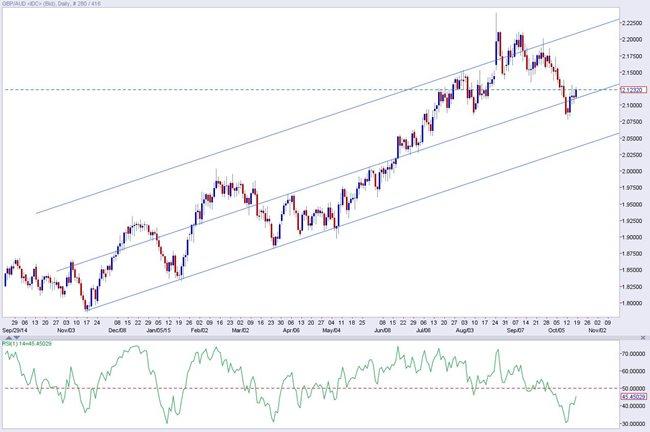
CAD
Canadian data is very mixed right now. Of course Canada's commodity and energy exports have been battered by the fall in both prices and demand and of course the CAD has weakened in light of those developments. However, factory sales fell less than expected in August and commodity markets seem to be levelling off. Hence the Canadian Dollar has recovered some of its composure and is making tentative gains in some currency pairs. Against the Pound the loonie is 10 cents stronger than it was 8 weeks ago but, put that into context and it is still 20 cents weaker than it was at the turn of the year. A 50% recovery, which is fairly common in foreign exchange rates, would take this pair back to C$1.92 or thereabouts and I wouldn't be at all surprised if we get there. As long as the Pound can keep its head above that level, there is scope for another advance; maybe as high as C$2.08 again but a break below C$1.90 would signal further falls.
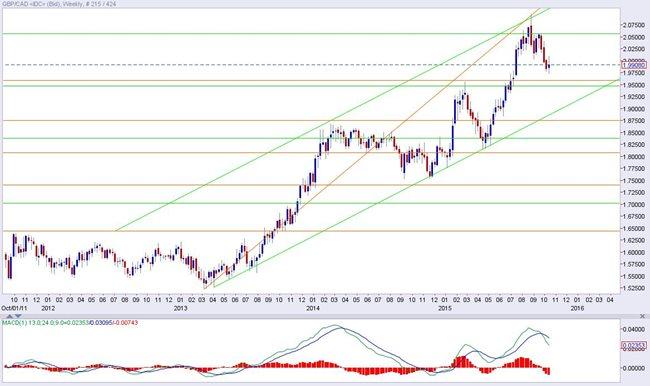
EUR
Mixed data from across the Eurozone and poor data from Germany are holding the euro back. We have yet to see the real impact of the VW scandal on German exports but that probably isn't going to look pretty when we do. Hence, traders are very nervous over the euro right now. The European central bank is exacerbating the situation with talk of further quantitative easing and well they might. There is no inflation to speak of in Europe, unemployment is still up around 11% across the currency sharing bloc and manufacturing and industrial activity is notable for its lack of expansion. Further cash injections into the economy may be the Eurozone's only chance for survival so why isn't the ECB getting on with it? They appear to be working at the pace of rabbits caught in 2am headlights. Meanwhile the Sterling – Euro exchange rate is trapped in a €1.3350 to €1.3850 range and doesn't appear to be ready to change.
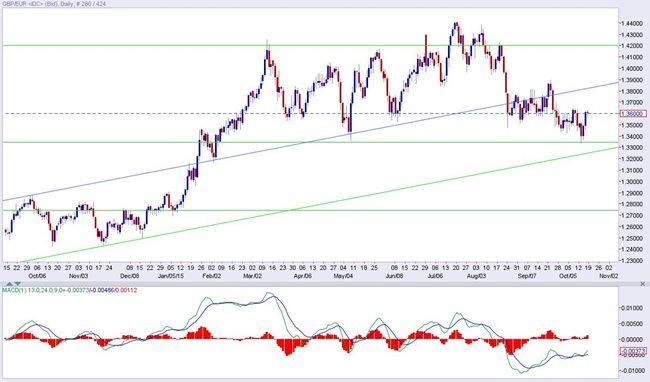
NZD
The NZ Dollar seems to be shrugging off the impact of China on both New Zealand's exports and those of its largest export market, Australia. New Zealand Consumer confidence seems to be as high as that of the All Blacks team. An index reading of 114.9 matches the April figure and is substantially higher than September. Perhaps news that the Reserve Bank of New Zealand may be planning interest rate cuts is falling on welcoming ears although that will weaken the NZ Dollar and increase the cost of imports but I guess kiwi consumers will cross that bridge when they get to it. While we wait for that, the New Zealand Dollar has gained 20 cents against the Pound since the start of September but it still remains 30 cents weaker than it was in April. On one hand, the NZD is a good buy at these levels but if you are a 'glass half empty' kind of person, you will notice that you missed the NZ$2.52 spike we saw in August.
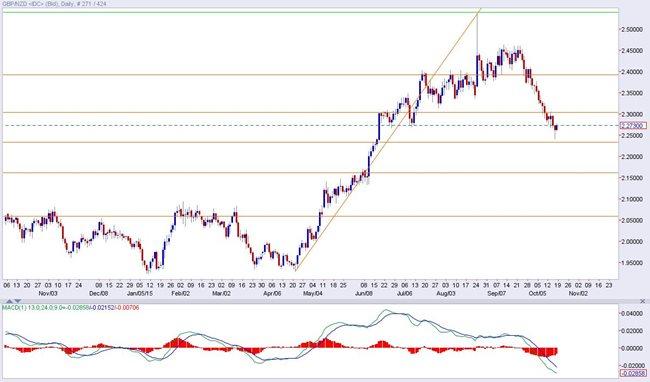
USD
In the year to June 2015, the Sterling – US Dollar exchange rate (cable as we know it) fell by 25 cents. Falls always seem easier than recoveries in this market and it has taken 4 months of volatility to get the Pound to recover from that $1.46 low to the current $1.55 area. The trend is marginally positive in spite to the recent dip but mixed data from either side of the Atlantic makes it hard to know what will happen next. In essence traders are all trying to second guess the timing of the first interest rate hikes from both the Federal Reserve and the Bank of England. The global impact of the Fed's decision will be so much more important than the BOE's but we in blighty will be interested in the UK base rate nonetheless. 6 months ago, most analysts expected the US base rate to have risen by now and the UK base to be edging towards an end of year hike as well. With the slowdown in China and the impact of the resulting commodity market slump still playing out, it is hard to see either central bank pushing the cost of borrowing higher any time this year and perhaps not even in 2016. Certainly equities traders are pretty confident of that; hence the strength of the FTSE and Dow Jones. As far as FX goes, if the Pound can break above $1.56, there is scope for a push up to $1.60 again with very little resistance. If on the other hand, the Pound slides below $1.51, the risk of a fall to $1.56 is a very real threat.
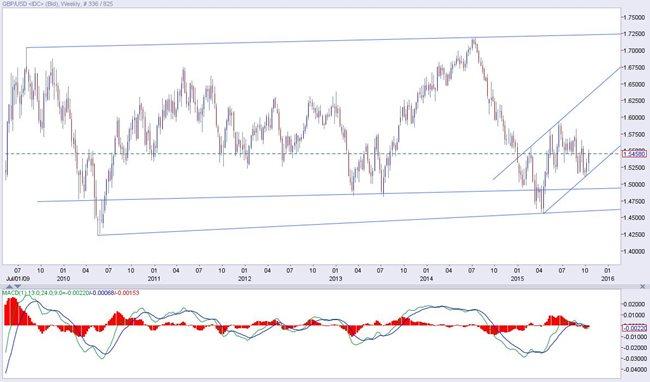
Trading foreign exchange on margin carries a high level of risk, and may not be suitable for all investors. The high degree of leverage can work against you as well as for you. Before deciding to invest in foreign exchange you should carefully consider your investment objectives, level of experience, and risk appetite. The possibility exists that you could sustain a loss of some or all of your initial investment and therefore you should not invest money that you cannot afford to lose. You should be aware of all the risks associated with foreign exchange trading, and seek advice from an independent financial advisor if you have any doubts.
Recommended Content
Editors’ Picks
USD/JPY holds above 155.50 ahead of BoJ policy announcement

USD/JPY is trading tightly above 155.50, off multi-year highs ahead of the BoJ policy announcement. The Yen draws support from higher Japanese bond yields even as the Tokyo CPI inflation cooled more than expected.
AUD/USD extends gains toward 0.6550 after Australian PPI data

AUD/USD is extending gains toward 0.6550 in Asian trading on Friday. The pair capitalizes on an annual increase in Australian PPI data. Meanwhile, a softer US Dollar and improving market mood also underpin the Aussie ahead of the US PCE inflation data.
Gold price keeps its range around $2,330, awaits US PCE data

Gold price is consolidating Thursday's rebound early Friday. Gold price jumped after US GDP figures for the first quarter of 2024 missed estimates, increasing speculation that the Fed could lower borrowing costs. Focus shifts to US PCE inflation on Friday.
Stripe looks to bring back crypto payments as stablecoin market cap hits all-time high

Stripe announced on Thursday that it would add support for USDC stablecoin, as the stablecoin market exploded in March, according to reports by Cryptocompare.
US economy: Slower growth with stronger inflation

The US Dollar strengthened, and stocks fell after statistical data from the US. The focus was on the preliminary estimate of GDP for the first quarter. Annualised quarterly growth came in at just 1.6%, down from the 2.5% and 3.4% previously forecast.